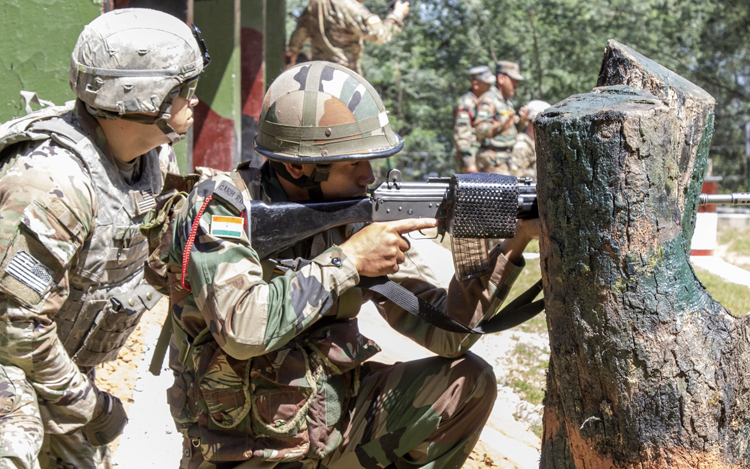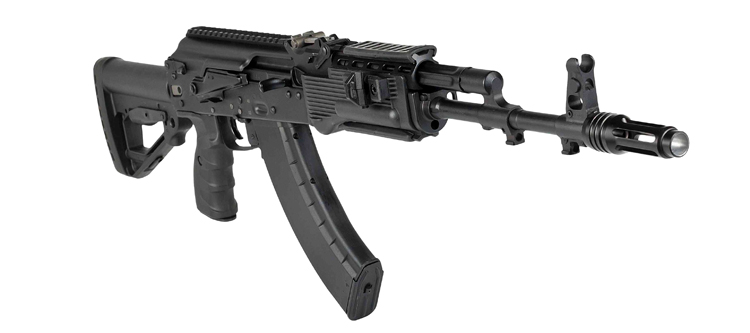INDIAN ARMED FORCES CHIEFS ON OUR RELENTLESS AND FOCUSED PUBLISHING EFFORTS

The insightful articles, inspiring narrations and analytical perspectives presented by the Editorial Team, establish an alluring connect with the reader. My compliments and best wishes to SP Guide Publications.

"Over the past 60 years, the growth of SP Guide Publications has mirrored the rising stature of Indian Navy. Its well-researched and informative magazines on Defence and Aerospace sector have served to shape an educated opinion of our military personnel, policy makers and the public alike. I wish SP's Publication team continued success, fair winds and following seas in all future endeavour!"

Since, its inception in 1964, SP Guide Publications has consistently demonstrated commitment to high-quality journalism in the aerospace and defence sectors, earning a well-deserved reputation as Asia's largest media house in this domain. I wish SP Guide Publications continued success in its pursuit of excellence.
- Operation Sindoor: Resolute yet Restrained
- India’s Operation Sindoor Sends a Clear Message to Terror and the World – ‘ZERO TOLERANCE’
- Japan and India set forth a defence cooperation consultancy framework, talks on tank and jet engines
- Terrorist Attack in Pahalgam in Kashmir: Unfolding a long surgical war against PAK
- Lt General Pratik Sharma takes over Command of Indian Army's Northern Command
The Indigenous Rifle Saga
The foot soldier is generally forgotten in the race of big-ticket weapon systems
 |
The Author is Former Director General of Information Systems and A Special Forces Veteran, Indian Army |

The 73rd Republic Day Parade showed a mix of vintage and modern weapons and weapon systems and smaller marching contingents. The first marching contingent was of the Rajput Regiment, wearing the uniform of 1950s and carrying .303 rifles, followed by the contingent of Assam Regiment, wearing the dress of 1960s. Then was the contingent of the Jammu & Kashmir Light Infantry attired in the 1970s uniform and carrying the 7.62mm self-loaded rifle. The parade also featured the 60-year old Centurion tanks on tank carriers. The spectacular fly past by 75 aircraft was the biggest ever but conspicuously did not include the home grown Tejas LCA for whatever unexplained reasons; an unpardonable oversight.
The contingent of paratroopers sporting maroon berets and carrying the Tavor assault rifles (procured from Israel) down the Rajpath in double time was outstanding. With India and Israel having established diplomatic relations on January 29, 1992 (though India had recognised Israel on September 17, 1950), Israeli President Isaac Herzog tweeted, "What a terrific milestone to celebrate India's 73rd Republic Day and the 30th anniversary of Israel-India ties in the same week. My warmest congratulations to President Ram Nath Kovind and the great people of India."
Three decades after the induction of the 5.56 INSAS rifles, the first AK-203 assault rifles being manufacture in India with Russian collaboration will hopefully see the light of the day in 2022
However, the full benefit of showcasing the vintage and modern rifles of the Infantry would be realised if we reflect on the following:
- During the 1962 Sino-Indian War, out troops were equipped with .303 rifles.
- The 7.62mm SLR 1A1 was introduced in the Indian Army in 1963 just after the 1962 Sino-Indian war to phase out the .303 Lee-Enfield rifles. It is also known as Ishapore 1A1. The 7.62mm SLR 1A1 is a copy of the UK L1A1 self-loading rifle.
- When the IPKF went to Sri Lanka, our troops were still equipped with the 7.62mm SLR while the LTTE was equipped with AK-47 assault rifles.
- When the Empowered Committee went to Israel in 2002 to sign the deal for the Tavor assault rifles, the under barrel grenade launcher (UBGL) had to be excluded being American, for which the US did not give permission. The UBGL had to be eventually procured from elsewhere.
- More than a decade after 17 x 5.56 assault rifles of 11 countries were handed over to the Defence Reasearch and Development Organisation (DRDO)/Ordnance Factory Board (OFB) in 1980, the Army commenced induction of the 5.56mm INSAS rifles, which even in those days did not match up with the top ten assault rifle in the world in the same category.
- Three decades after the induction of the 5.56 INSAS rifles, the first AK-203 assault rifles being manufacture in India with Russian collaboration will hopefully see the light of the day in 2022.
In terms of showcasing the vintage and modern arms, the 73rd Republic Day Parade would have been more ‘inclusive’ with a tableau depicting the bureaucrats and DRDO/OFB officials who delayed the modernisation of our soldiers in terms of an assault rifle because of intransigence and endemic corruption. The following chain of events should be a model case study for posterity.
Imported rifles were handed over to the DRDO-OFB to develop an indigenous version, and after 15 excruciating years emerged the 5.56 INSAS which was nowhere close to the top 10 assault rifles of the same category available globally
The foot soldier is generally forgotten in the race of big-ticket weapon systems; fighter aircraft, helicopters, ships, tanks, missiles, artillery and the like. In 1980, 17 x 5.56mm assault rifles from 11 countries were imported by the MoD, aim being to equip 3 x parachute commando battalions and 3 x parachute battalions (latter part of the Parachute Brigade), funds for which had been reserved in the Sixth Army Plan. The Army completed comprehensive trials in 1980 in accordance with the trial directive issued by Army Headquarters. However, the case went into cold storage. It emerged that an anonymous letter was received by the then Defence Minister alleging $10,000 had been paid to place a particular rifle at the top.
Then, in 1985, the MoD floated a query as to why the AK-74 assault rifles had not been tried out. The Army replied that these 17 weapons were imported by MoD without reference to the Army and the AK-74 in any case was of 5.45mm bore whereas the entire Indian Army was planning to be switch to 5.56mm assault rifles. In this war of red tape, the Sixth Army Plan lapsed and so did the funds for the six battalions that were to be equipped.

After induction of IPKF in Sri Lanka and fighting the LTTE equipped with AK-47 assault rifles, the Indian Army perforce had to import 1,00,000 AK-47 rifles (then costing only $300 apiece) and give some 100 per infantry battalion in the IPKF.
Meanwhile the abovementioned 17 x 5.56mm imported rifles were handed over to the DRDO-OFB to develop an indigenous version, and after 15 excruciating years emerged the 5.56 INSAS which was nowhere close to the top 10 assault rifles of the same category available globally. Even today, soldiers guarding the frontline on Siachen Glacier keep a loaded AK-47 next to the personal issue INSAS because there is no guarantee that the latter would not jam at the critical fleeting moment. Frankly, the DRDO-OFB should have gone in for an AK-47 with a matching night sight, which, with double strapped filled magazines gives enough firepower to the soldier.
The Defence Acquisition Council (DAC) finally accorded permission in November 2021 of around 6,70,000 AK-203 assault rifles and the final contract was signed in December 2021
In 2011, a global tender was floated for new generation assault rifles with interchangeable barrels for conventional warfare and counter-insurgency operations is likely to be scrapped. The plan was to go for direct acquisition of 65,000 of these new generation assault rifles at an estimated cost of around 4,850 crore, to equip the 120 infantry battalions deployed on the western and eastern fronts. The Ordnance Factory Board (OFB) was to then subsequently manufacture over 1,13,000 such rifles after getting transfer of technology (ToT) from the foreign vendor or go for joint venture (JV). But this plan was subsequently dropped.

On March 3, 2019, Prime Minister Narendra Modi had laid the foundation stone for the AK-203 rifle manufacturing plant - the Indo-Russia Rifles Private Limited (IRRPL) at OFB Korwa in Amethi in presence of President Putin. The joint venture (JV) was between the OFB and Russia’s Rosoboronexport and Kalashnikov Company. At that time it was stated that production of the AK-203 assault rifles will start within one year. Then the skullduggery began with the OFB was quoting a higher price than what a direct import from Russia would have cost. Isn’t it strange that you establish a factory without having decided on price of the weapon to be manufactured?
Eventually, the Defence Acquisition Council (DAC), headed by Defence Minister Rajnath Singh, finally accorded permission in November 2021, for the manufacture, with Russian help, of around 6,70,000 AK-203 assault rifles and the final contract was signed in December 2021. It is quite depressing to note how our bureaucracy works and the red tape with no consideration to the ground situation and the operational requirements of the troops on the frontline. Finally, will we learn anything from all this remains the question.





